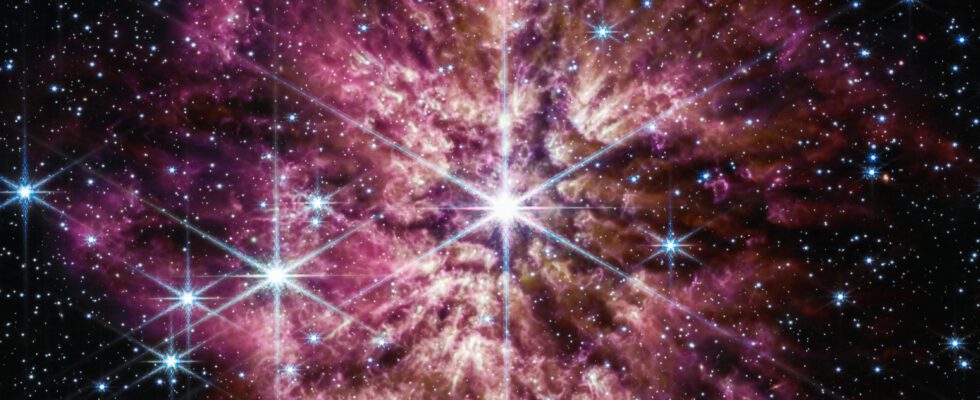The James Webb telescope once again offers us an exceptional shot with the image of a supernova about to explode.
The launch of the James Webb Telescope on December 25, 2021 will have been an important milestone in the exploration of the universe, with the incredible shots it has been able to offer us since its commissioning. Thus, after magnificent images of the pillars of creation, a star on the verge of becoming a supernova is revealed.
A Wolf-Rayet star just for our eyes
Some massive stars, Wolf-Rayet (WR) stars, have a very specific way of becoming supernovae. For a brief period of their end of life, about 1 million years, they expel the material that surrounds their core in the form of stellar winds into space. They then take on a characteristic shape made up of halos of dust and gas.
This stage is traditionally difficult to observe. This is the reason why the picture that the James Webb has just given us is valuable for scientists, while feasting the eyes. The image you can see in the introduction to this article is that of the star WR 124, located in the constellation of Sagittarius, some 15,000 light-years from our little blue planet.
Solve the dust riddle
Like all stars that explode and end in a supernova, WR 124 is a very heavy star, around 30 times the solar mass. The expelled material observable at the moment is 10 times the mass of our star.
With the James Webb images, astronomers will be able to observe the cosmic dust released by the star and coming from the gases in the process of cooling. The telescope’s extraordinary infrared sensors will indeed be able to give more details for the first time on how this dust is formed as well as its ability to survive a supernova in order to contribute significantly to the stock of the universe.
This is an important element, since the stock of this dust, which is used in particular to form future stars and planets, and for the agglutination of molecules, is greater than what scientific theories can currently explain. How far will James Webb allow us to go?
Source : NASA

6